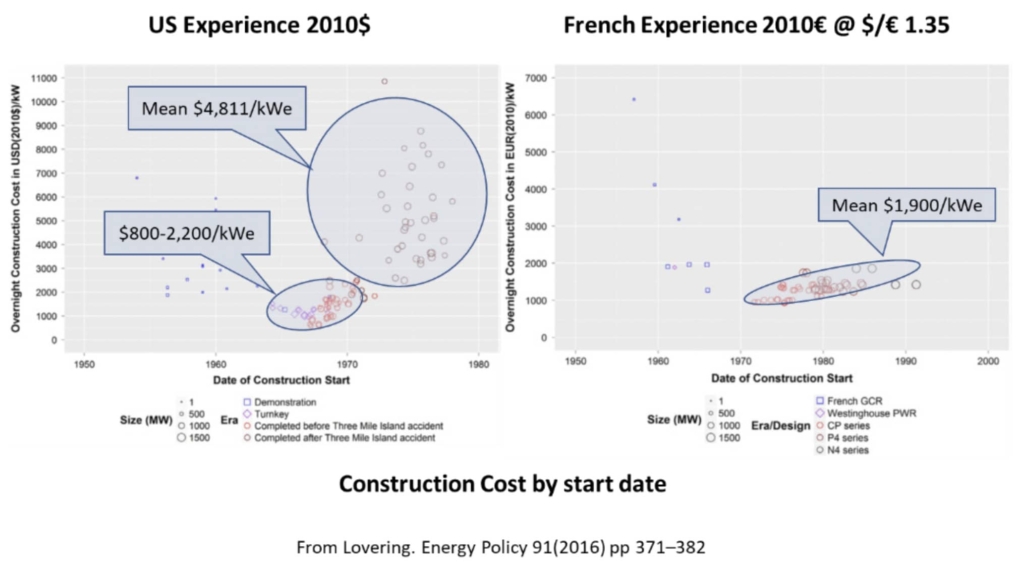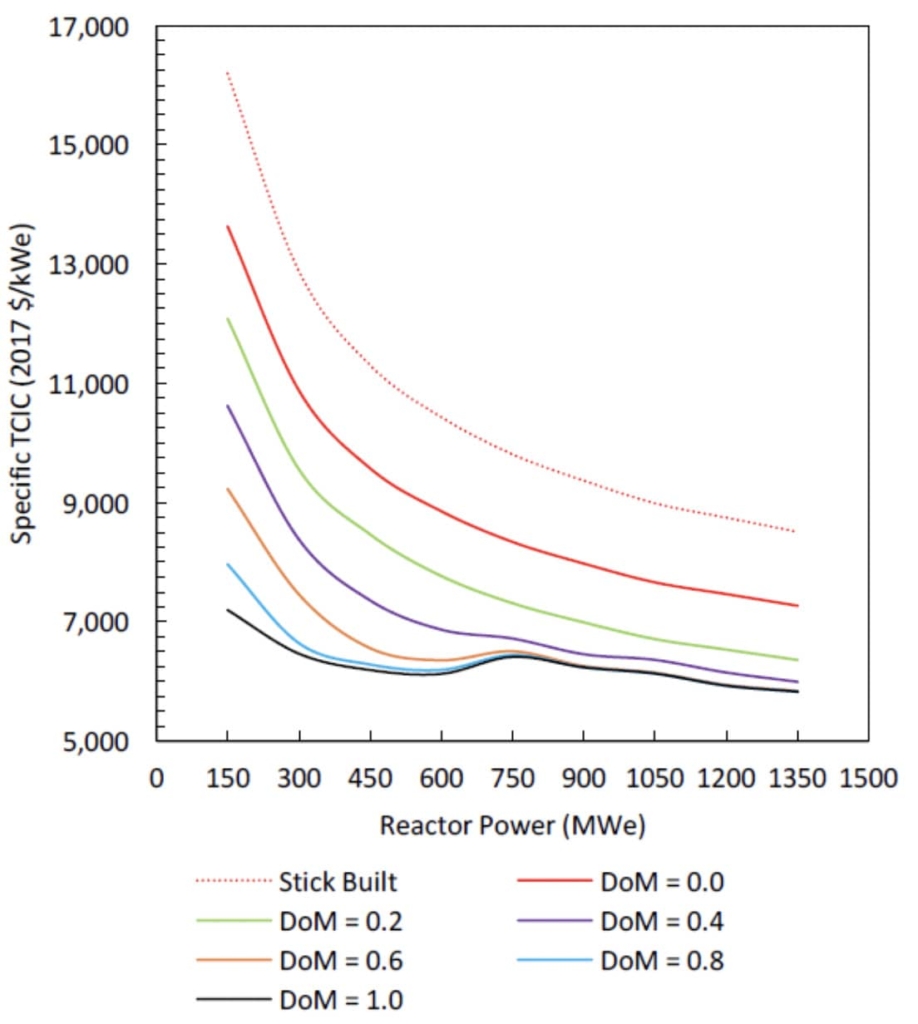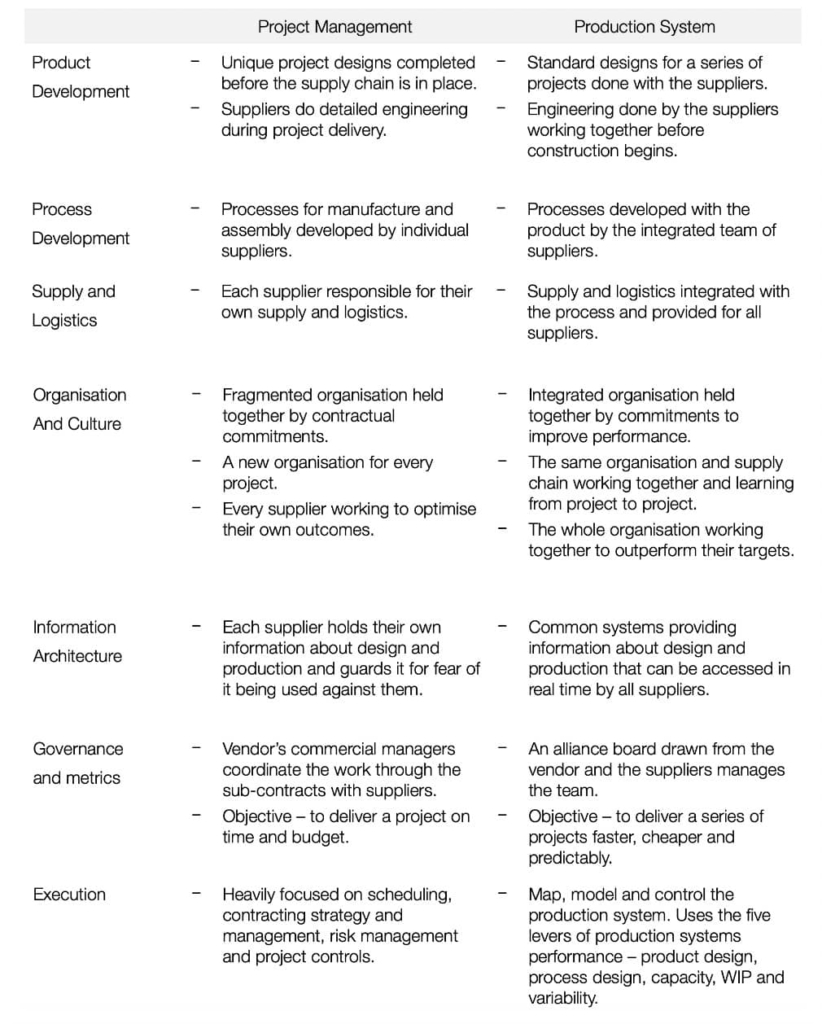Nuclear power is returning to the energy agenda in Europe and elsewhere across the globe because of the challenges of Climate Change and a refreshed understanding of the need for energy security. Nuclear power has a cost problem which is largely driven by the high cost of construction and long build schedules.
This paper addresses the key ways of making nuclear power affordable by: taking a programme approach, adopting modern production methods that are commonplace elsewhere but not applied in the nuclear industry and by creating production systems that profit from series build as against one-off projects and drive efficiency throughout the supply chain.
Keywords: Nuclear, Lean, Project Production Management

Tony Roulstone established and teaches on the Nuclear Energy Masters programme in the Department of Engineering at the University of Cambridge. His research interests are the economics and safety of nuclear power with a focus on Small Modular Reactors. He is leading several SMR research projects in the UK. Also, he is involved with projects on the in ...

Simon is a civil engineer specializing in infrastructure development. He has been a senior manager in the aviation and railway industries and the client for several large projects including the Channel Tunnel Rail Link. He has a particular interest in modern methods of construction and in improving the industry’s performance. Simon is a founder membe ...
The large investments in nuclear power in more than 20 countries, mostly in the 1970s and 1980s, built 400 power reactors that have provided more than 10% of global electricity, reliably and with low operating costs. However, this impetus for nuclear power was stopped firstly by concerns about safety and then by the very high costs and long build duration of construction. Only in East Asia has there been any significant construction in the last 20 years with growing programmes in China and South Korea.
The attractiveness of nuclear power has been changed in many countries by two main factors. Firstly, the drive to decarbonise economies in response to Climate Change and secondly, the reawakening of interest in energy security in response to the intermittency of renewables and the uncertainties of fossil fuel supplies in response to the war in Ukraine.
Like many European countries, the UK has adopted a net-zero target for greenhouse gas emissions across the whole economy which means that all power generation will have to be zero, or very low carbon. Nuclear power is zero carbon in operation.
Also, the British Energy Security Strategy [1] commits the UK to a programme of new nuclear power, seeking to have 24GW of nuclear power by about 2040, as part of its plans to decarbonise the economy. The old gas cooled reactors in the UK are in the process of being shut down because of their age. The large new power station at Hinckley Point, together with the existing and proposed plants at Sizewell, will deliver about 8GW of power leaving about 16GW to be provided by new nuclear power stations. The experience of the last ten years suggests that this is unlikely to be achieved by building four or five more large power stations, especially when EDF is not planning to build any more of their current EPR design.
While the attitude to nuclear power is being changed by the challenge of Climate Change, the future of nuclear power in the UK and elsewhere across Europe lies in finding ways of designing and building power stations that are faster, cheaper and more predictable. There needs to be a step change in performance that can come from changes to the way that these projects are planned, how they are constructed and how nuclear industry performs. Lean methods in nuclear power will mean programmes of standard designs, smaller units that are designed for modular construction and the application of production system thinking.
In the UK, successive governments have tried to use international tendering to procure and finance large new one-off power stations like Hinckley Point C, Moorside and Wylfa. Suppliers have spent billions of pounds developing unique designs, preparing their offers and engaging in years of negotiations with the government over who will bear the risks of construction delays and cost overruns. These projects have either collapsed in negotiations over funding or, as in the case of Hinckley Point C, have been funded by foreign governments that have underwritten the risks in return for guaranteed prices for the electricity they will generate. As a result, consumers will pay high prices for this electricity for many years to come.
In his recent book How Big Things Get Done [2], Professor Bent Flyvbjerg of the Said Business School at Oxford showed that the UK is not alone in finding it difficult to deliver new nuclear power stations. Drawing on a database of more than 1,000 infrastructure projects from around the world, he calculated that nuclear power stations are amongst the least predictable, with average cost overruns of 120% and average delays of 65% of the original schedules. He concluded that this is caused by the fact that most of these are large and complex projects built to unique designs. The projects take many years to complete so there are few opportunities for the teams to learn from project to project and many opportunities for projects to be impacted by unforeseen events.

These conclusions are supported by data from the construction of fleets of nuclear power stations in the USA and France in the 1980s (Lovering [3]). The US built some fifty reactors using many different vendors, constructors and designs. At about the same time, France built about the same number of reactors based on a design provided by a single US vendor with direction from the centre and stable construction teams. The results, summarised in Figure 1 above, show that for projects built in the 1970s and 1980s, the French power stations cost on average 60% less than those built in the US and were delivered as much as three years earlier.
UK Energy Technology Institute [4] has highlighted more recent examples of good practice in nuclear power stations built in Japan and Korea that used standard designs and lean construction ideas. They had similar cost and schedule outcomes to those built in France. These countries are now the benchmarks for nuclear construction worldwide. The difference between these benchmark projects and recent experiences in the UK lies in how the projects are designed and procured. When programmes of new power stations are procured project by project, the result is usually a series of unique designs with each project being built by a different team of suppliers and contractors. Efficiency and economy come from building the same design over and over again using the same teams.
Flyvbjerg argues that the solution to the cost-effective delivery of nuclear power stations is to adopt a modular approach to designing and building them. If power stations consisted of a series of small modular reactors, each reactor would be cheaper and could be built faster, delivering power to the grid and revenues to the investors in less time. And if each small modular reactor (SMR) was built to a standard design using standard components made in factories, the process would be more efficient and more predictable. The critical step would be to procure programmes of several SMRs so that the successful vendors could invest in stable supply chains and modern production systems enabling them to learn from project to project and deliver continuous improvements in performance.
This approach is supported by Tony Roulstone of Cambridge University. In his paper “Expanding Nuclear’s Contribution to Climate Change with SMRs” [5], he showed that a programme of SMRs built to standard designs using modular components would cost less and be delivered faster than one-off large reactors. The apparent disadvantage of the smaller scale of SMRs can be offset by:
Design for modular construction and assembly is not new. It is widely used in shipbuilding, construction, and the oil & gas industries. It aims to transfer work from sites where productivity is low, either because of congestion, poor working conditions or the lack of tooling and systems, to factories where better conditions, tooling and support systems can be provided. The scale of nuclear construction together with its project-by-project approach means that modularisation is either difficult, or it fails to pay back the investment required within a single project.
Hitachi [6] has shown that on-site modularisation of their large ABWR design with design control and standardisation pays off. They demonstrated shorter construction schedules and much reduced site construction labor costs over a number of projects. Conversely, Westinghouse’s experience of modularisation with AP1000 has been less successful, perhaps because of their lack of experience in the use of these design and construction techniques and because they did not have several consecutive projects to learn lessons from the first which can be applied as improvements on later ones.
Modularisation has the scope to both improve direct labor productivity and to reduce build schedule duration. Its success depends on the standardization of the design, the supply chain and the construction process. The size of the benefit of modularisation depends on the ability to break the design and its systems down into modules that can be fabricated, transported, and assembled in-situ. An important lesson from industries where modularization has been used is the importance of production modeling to design the optimal overall production system including what to modularize and where to do the work. Two key decisions that will greatly influence the ultimate outcome.
In the study [5] of modularization applied to Small Modular Reactors (SMR), the focus was on factory rather than site-built modules, hence the importance of transportation as a constraint. We have seen from AP1000 construction projects that the size of large reactors makes off-site modularization more difficult.
SMRs have better potential for modularization because of their smaller size. A detailed module breakdown was assessed against reactor size and the transport constraints of UK roads. There is a trade-off between making modules smaller for transport and the amount of site assembly work and site build schedule reduction. This is also affected by the type of modules considered. For example, large concrete and liner modules are more difficult to modularize and less economic to make off-site than mechanical modules, such as those forming the liner. Their geometry or their excessive weight means such modules cannot be transported by road, regardless of the reactor’s size. The transportability of other types of modules is strongly correlated with reactor size, in particular precast concrete and steel modules. Mechanical and electrical modules are, for the most part, transportable regardless of the reactor size.
The analysis of transport constraints shows that SMRs with sizes less than 450 MWe are better able to achieve high degrees of modularization (60% or more) than larger reactors. Also, transport constraints affect schedule reduction resulting from modularisation. In this study and a similar US study of a Westinghouse SMR [20] a detailed linked construction schedule was used as the baseline. Where areas of construction were modularised, the construction schedule was shortened, taking into account the remaining preparation and assembly time and the critical path.
Taken together the productivity improvements from off-site manufacture and the economic effects of reducing the length of build schedules on capital costs - measured as the Total Cost of construction including Interest during Construction (TCIC @7.8% pa) are shown in Figure 2. The baseline is a non-modular ‘stick-built’ system, with grades of increasing degree of modularisation (DoM). The results show the effect of economies of scale: as reactor size reduces, construction cost increases due to the unwinding of economies of scale. Also, they show that if SMRs are stick-built they will cost more than large reactors. SMRs need modular build to compete.

Furthermore, if the programme contained sufficient projects, nuclear power plant unit cost would reduce over time through production learning and the electricity they generated could be competitive with renewable energy -$60-70/MWh.
This approach is not new. In 1995, BAA Plc developed a production system to deliver the new Terminal 5 at Heathrow. Using long-term relationships with their suppliers and standard components wherever possible, BAA completed the new terminal on time and close to the budget. The critical feature of BAA’s approach was that for six years before the start of construction in 2002, they used their ongoing investment programme at their airports to develop their supply chain, the production system and their own management team. Subsequently, Anglian Water adapted the approach to deliver a large part of their investment programme, making extensive use of modular designs and standard components. Over a period of ten years, they reduced the unit costs of their infrastructure by 30% [7].
Modular designs using standard components are important features of this new approach, but it is the production system that brings it together and delivers the improvements in performance. Production systems have been used for decades to design and build large capital goods from ships and aircraft to trucks and cars. But before applying it to a programme of SMRs, it is important to understand how it differs from the project management systems that are presently used to deliver nuclear power stations.

Table 1 summarizes the principal characteristics of traditional project management and a production system when applied to large infrastructure projects. It is based on a study on the application of production systems to construction that was carried out by Anglian Water with support from Heathrow and National Highways in 2019. The study identified the six key features of a production system that are used to make this comparison.
Nuclear power can best address its serious and persistent cost and build schedule problems by adopting a programmatic approach, repetitively building of standard nuclear power plant that have been designed for modular construction, together with investment in series production facilities. Adopting these methods will allow nuclear power to regain competitiveness, allowing it to play a significant role in many countries in addressing Climate Change.
The key to making these process changes and delivering attendant benefits lies with transforming the mindset of the nuclear industry from one project at a time, to a series of projects delivered by a production system. Both because the history of the industry and the experience of nuclear project construction managers this will not be easy. There is little experience (at least outside East Asia) of recent nuclear construction and modern construction methods and the use of production systems.
Learning these lessons using SMRs will be easier because of their smaller size and the larger volumes of production. The keen interest in the new SMR designs in the UK and Europe provides the best opportunity for the nuclear sector to adopt Lean Methods and become competitive once again.
Tony Roulstone teaches at the University of Cambridge where he established the Nuclear Energy Masters Programme. His research interests are the economics and safety of nuclear power with a focus on Small Modular Reactors. He spent most of his career in the nuclear and aerospace industries and is a former MD of the Rolls-Royce Nuclear Group.
Simon Murray is a chartered civil engineer who has held senior executive and non-executive positions in leading infrastructure companies including BAA Plc, Railtrack Plc and National Highways Ltd. He co-authored the Institution of Civil Engineer’s report ‘From Transactions to Enterprises’.